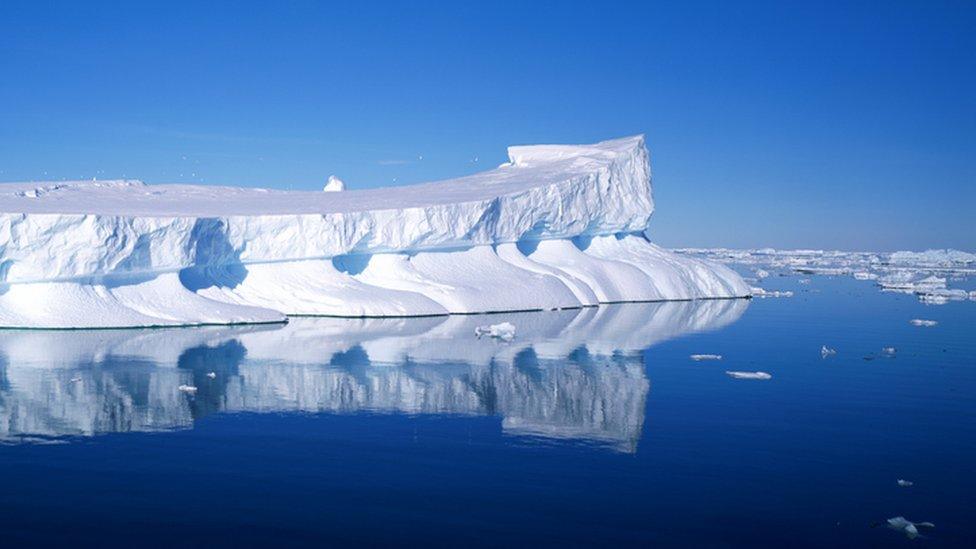RRS Sir David Attenborough: Research ship inspects the world's biggest iceberg
- Published
- comments
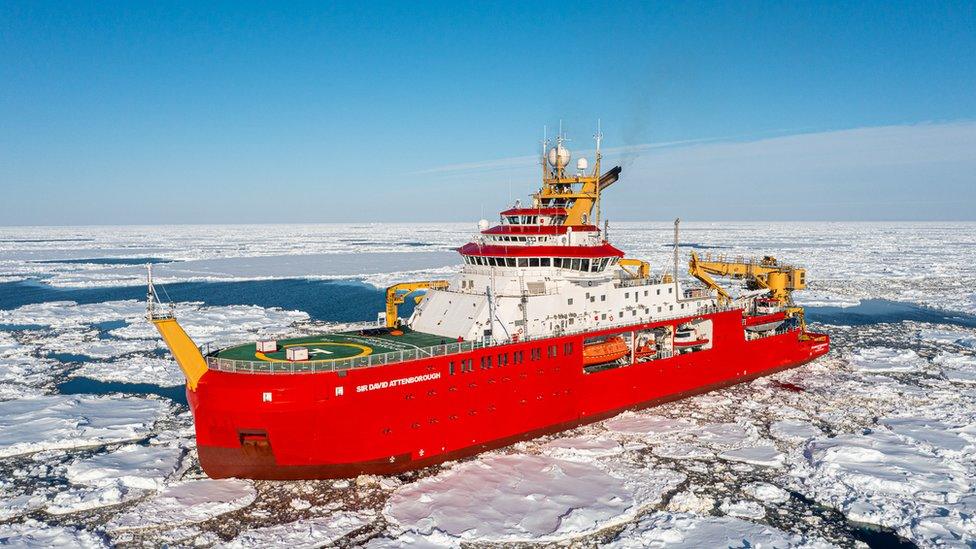
The RRS Sir David Attenborough passed the mega iceberg on Friday 1 December
A mission by scientists to the Antarctic has been getting a close-up look at the world's biggest iceberg.
The iceberg, which is called A23a, covers an area about three times the size of New York city, or twice the size Greater London.
Now, the UK's research ship RRS Sir David Attenborough has been able to come face to face with the mega-berg.
It's so scientists on board could get a more detailed look at one of the true wonders of the natural world.
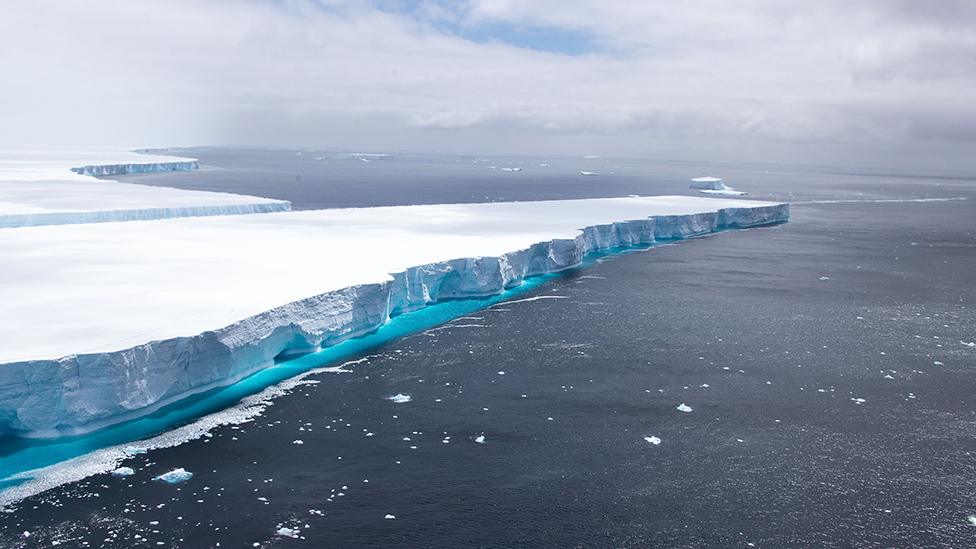
Great icebergs, such as the recent A68 object, "fertilise" the oceans with mineral nutrients
A23a was once part of an ice shelf, which are floating sheets of ice attached to land. It broke away in 1986 and since then, it has been stuck to the seafloor.
However, during the past year, currents and winds have driven the frozen block rapidly across the Weddell Sea and it's now heading towards the Southern Ocean.
RRS Sir David Attenborough passed the iceberg on Friday 1 December near the tip of the Antarctic Peninsula while heading south towards Signy Island.
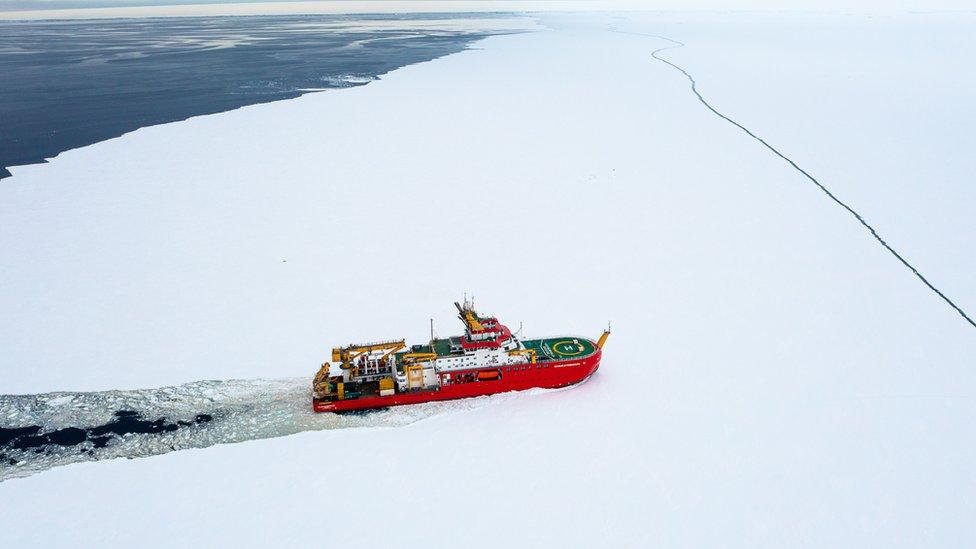
The polar ship is on its first full scientific mission to Antarctica after completing all its trials
A drone flew across the iceberg, but it's still difficult to understand just how gigantic it really is.
It took the Attenborough several hours to sail along two sides of the square berg.
The white of A23a's surface extends upwards, but most of the berg's huge mass is below the water.
It's thought some sections may be more than 300 metres thick.
Why is the inspection of icebergs like this important?
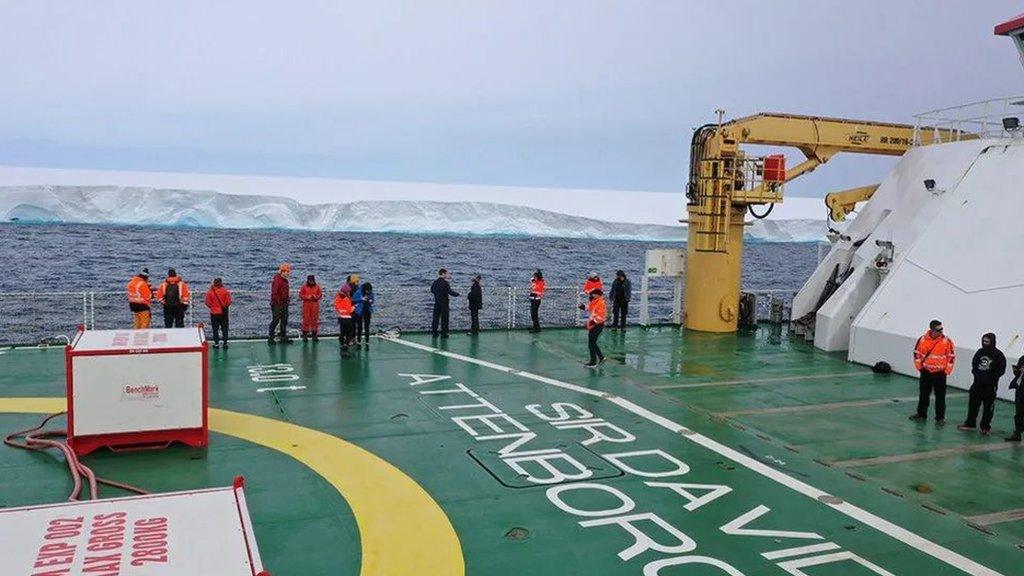
It took the Attenborough several hours to sail two sides of the berg
The £200m RRS Sir David Attenborough is on its first full scientific mission to Antarctica after completing all its trials.
Its activity will help the British Antarctic Survey's Biopole project, which is studying how polar regions, the places which surround Earth's North and South Poles, use carbon and nutrients to keep the oceans healthy, and what that means for climate change.
The inspection of iceberg A23a is a very useful subject for this, because as big bergs like this melt, they release minerals which are an important source of nutrients for creatures such as phytoplankton which are a key part of ocean food chains.
"These icebergs provide different sources of nutrients," explained Prof Geraint Tarling, who is Biopole's principal investigator.
The Attenborough also took the opportunity during its mission to collect water samples around A23a.
- Published6 February 2023
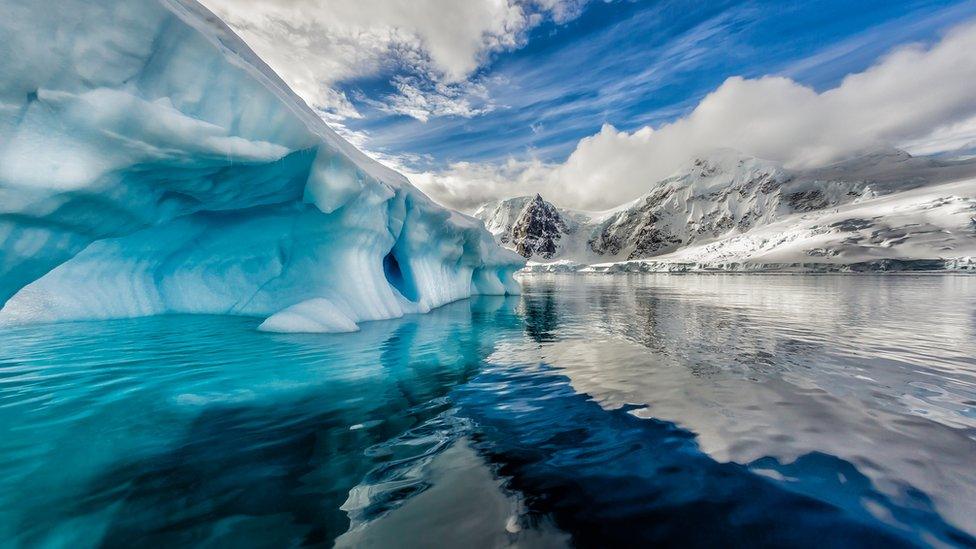
- Published14 March 2023
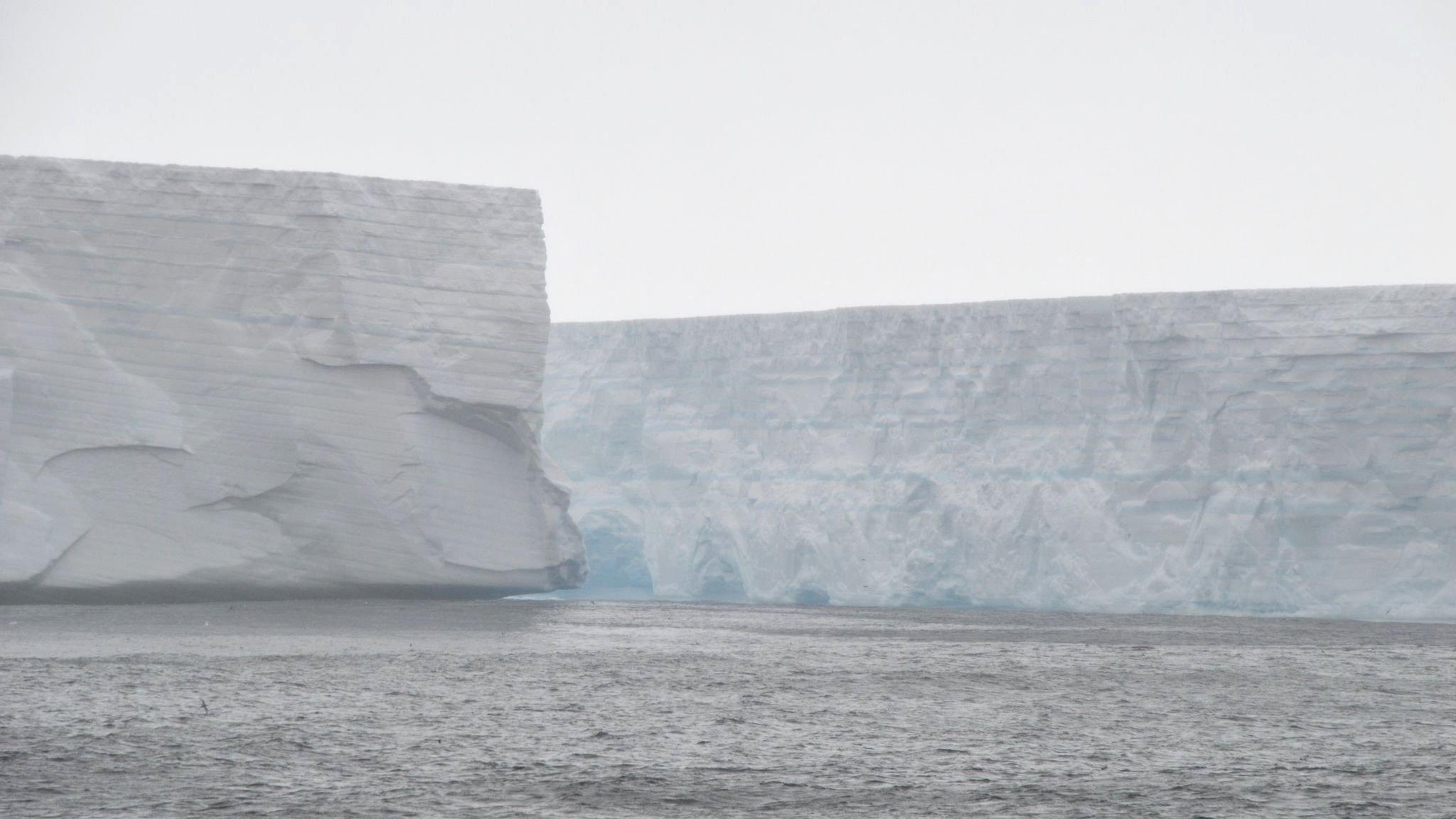
- Published28 November 2023
